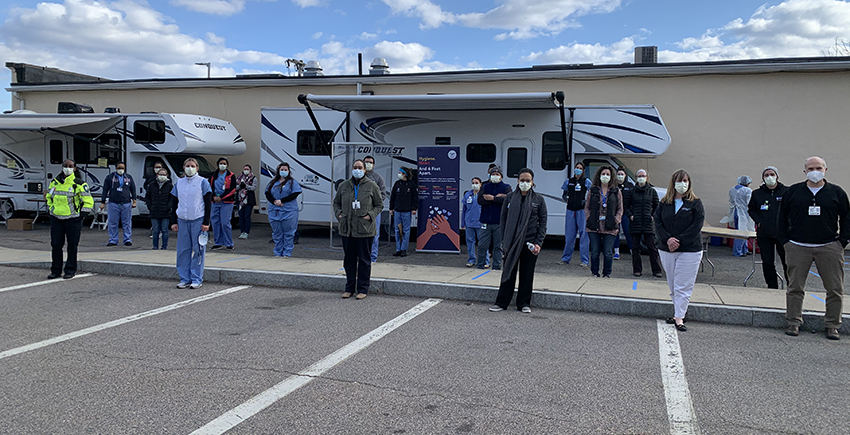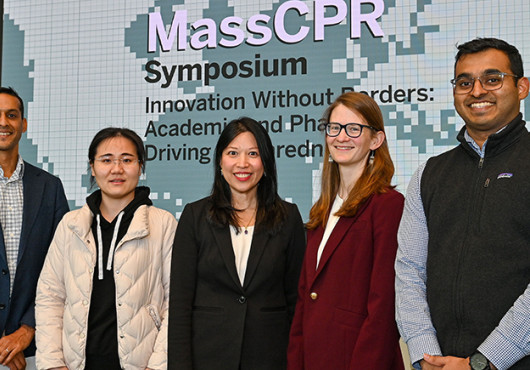
This article is part of Harvard Medical School’s continuing coverage of medicine, biomedical research, medical education and policy related to the SARS-CoV-2 pandemic and the disease COVID-19.
Health care equity is a subject close to Thomas Sequist’s heart, whether he’s working with marginalized groups in the greater Boston area or with American Indian communities around the country.
Before SARS-CoV-2 emerged in Wuhan, China, the Harvard Medical Labcast hosted Sequist as a guest. He spoke about his indirect path in medicine, his efforts to ease the way for American Indian students interested in health care, research and policy and his ongoing projects at the local and national levels to improve quality of care for all patients.
Now, in the grip of the COVID-19 pandemic, Harvard Medicine News followed up with Sequist to learn not only how the virus has affected the programs he leads but also how it has exposed and exacerbated health disparities from East Boston to Navajo Nation.
Sequist is professor of health care policy and medicine in the Blavatnik Institute at Harvard Medical School and Brigham and Women’s Hospital. He is also chief patient experience and equity officer at Partners HealthCare.
HMS: You direct the Four Directions Summer Research Program at HMS and Brigham and Women’s Hospital, in which college students dedicated to Native American community health come to campus to do a mentored research project. Has this year’s program been affected by the pandemic?
Sequist: The program isn’t going to happen this summer. We had selected eight students from the around the country, and everyone had accepted, but we didn’t feel we could offer them a great opportunity, given that everything is still likely to be closed down or recovering from being closed down. That’s a bummer. But we will restart next summer. We may try to do something remotely this summer, but we haven’t set that up yet.
HMS: For many years, you’ve also coordinated partnerships between health care providers at Brigham and Women’s and the Navajo Nation via the Indian Health Service. Navajo Nation, like some other Native American communities, has been harder hit by the COVID-19 pandemic than adjacent areas. Has your program been involved in mitigation efforts?
Sequist: We have definitely been involved with the Navajo Nation. You may have seen some press around the outbreak being quite severe there. Our program has done things such as trying to donate supplies and personal protective equipment. We’ve also been working with them to provide clinical support, whether it’s in the psychiatric space, employee wellness or critical care consultations through telemedicine.
HMS: It must be difficult to witness these communities struggle harder than many others against the virus.
Sequist: It’s really tragic what’s going on there in terms of the outbreak and the real lack of resources. I don’t know that it’s gotten a lot of attention. This is, unfortunately, like the perfect stress test for when you have an underfunded health system and communities that have been marginalized for so long that they don’t have an infrastructure to help them through this kind of a crisis.
Much like you’re seeing in the Boston area, this isn’t something that happened as a result of COVID-19. It’s not that the health care system didn’t do what it needed to do starting in March. What you’re seeing on American Indian reservations, or in Chelsea or Mattapan here [in Massachusetts], is the result of decades of racism that exists in our society. It would be unrealistic to expect that some intervention that started four weeks ago will counter that.
My big worry is that … There seems to be more awareness generally of the topic of equity, because you can see the horrible effect this pandemic is having on communities with limited access to resources. My concern is whether that will be a passing fad. When COVID-19 goes away, will we forget what we learned?
HMS: Speaking of equity, you’re chief patient experience and equity officer at Partners HealthCare. How has the pandemic shaped your day-to-day responsibilities?
Sequist: I oversee the operations section for our COVID-19 response. Built into that response is an equity workstream, which involves three components.
One is thinking about the impact of everything we’re doing and can do for our health care workforce. That includes doctors and nurses, but the majority are food and environment service workers. We’re looking at how policies impact lower-wage earners in our system. Even in an area as basic as communications, we have to make sure messages are designed, written and put out through pathways that all workers can access. For example, large segments of our population probably don’t regularly use email. Materials need to be in people’s preferred languages.
The second is having an equity strategy around patient care, when patients are in our hospitals and clinics. As just one example, if we’re developing tools, whether text messaging programs or hanging up signs, we need to ensure they’re linguistically appropriate and in languages other than English. That has involved significantly expanding our translation service capacity.
And the third part is having a strategy for our communities that are being hardest hit by the pandemic. We have identified hotspots, whether Chelsea or Lynn or other areas, and are pursuing proactive strategies there. We are increasing COVID-19 testing, setting up clinics, sometimes even bringing out RVs that can be mobile. We are promoting infection-control best practices, so we are handing out tens of thousands of kits with masks to residents along with hand sanitizer and information sheets that are culturally and linguistically appropriate, talking about the importance of social distancing and not touching your face, that kind of thing. And then we’re doing direct outreach from our clinics, calling our patients who live in these communities, checking in on them, screening for symptoms and offering care if they need it as a result of an infection.
HMS: That’s a lot. What’s your general mood these days?
Sequist: I think people are tired, but I feel optimistic that we are as well prepared as we possibly could be. We’re reaching the peak of the surge of infections [here in the Boston area], and I’m relatively confident we have done everything we can to prepare for this.
HMS: Are you able to look ahead?
Sequist: We always think long-term too, so we’re thinking about what will things look like three months from now? How do we prepare? What will health care look like after this first wave? No one really knows. We’re preparing for different scenarios.
This interview was edited for length and clarity.
To hear more about Sequist’s life and career, listen to our podcast, recorded in 2019:



